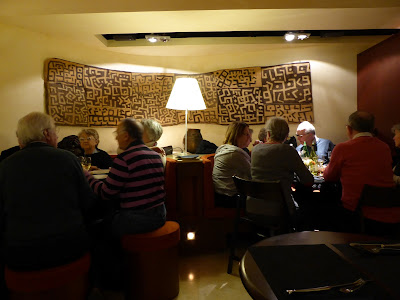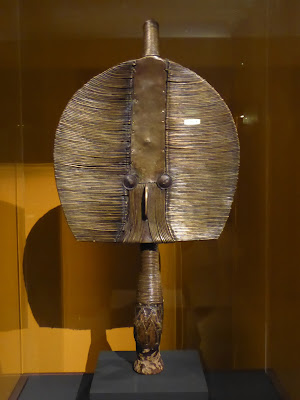In two recent ETBP blog posts I mentioned that plans are underway for a Beauford Delaney exhibition in Paris.
Today, I'm sharing details about this groundbreaking show and Entrée to Black Paris' involvement in it!
I recently founded a U.S. non-profit organization called Wells International Foundation (WIF). Beauford Delaney: Resonance of Form and Vibration of Color (formerly entitled Beauford Delaney and Paris: A Breathtaking Evolution)is the foundation’s inaugural project. Three of WIF’s focus areas will come together through the exhibition – the arts, study abroad, and STEAM (science, technology, engineering, arts, and mathematics).
To bring the project to fruition, WIF is partnering with a number of organizations, including Les Amis de Beauford Delaney, a French non-profit association that I founded in 2009, and Columbia Global Centers | Europe at Reid Hall in Paris. Columbia Global Centers is providing 1400 sq ft of exhibition space that will permit the display of over 40 paintings and works on paper by Beauford Delaney (1901-1979), most of which have never been seen by the general public before. The grand opening is scheduled for February 3, 2016 and the show will run from February 4-29, 2016. This will be the first solo exhibition of Beauford's work in Paris since the 1992 show organized by the Galerie Darthea Speyer.
1953 Carl Van Vechten
Beauford Delaney
1957 Oil on canvas
Centre Pompidou, Paris
© Estate of Beauford Delaney,
by permission of Derek L. Spratley, Esquire,
Court Appointed Administrator
During the spring semester, Columbia University will be offering an undergraduate course entitled "Le Pari(s) du Jazz,” taught by Professor Alexandre Pierrepont, at Reid Hall. Upon learning of WIF’s plans for the exhibition, Professor Pierrepont decided to incorporate it into the course in the following ways:
- Spoken word artist Mike Ladd will speak at a public event about jazz in conjunction with the course. He is personally acquainted with Beauford’s biographer, David A. Leeming, and appreciates Beauford’s work. Given that his talk will be held in the exhibition space, Ladd will speak about the works in the exhibition as well.
- The university will host a public screening of a documentary about the African-American experience in Paris. Entitled Paris Noir, When African Americans Came to Paris (Blue Lion Films, 2015), the film includes several references to jazz and to artists, including Beauford.
- I will give a private presentation of Beauford’s art to the undergraduate students of the class.
Image courtesy of Mike Ladd
J Rêve International, an organization that fosters visual and performing arts, creative education, and global exchanges to transform lives and communities, will host a Global Educator Program workshop on STEAM education and multiple intelligences inspired by Beauford’s life and work. Six teachers from New York, South Korea (via Ohio), and Texas will participate in the week-long workshop designed to develop experience that equips them with the global competencies necessary to bring an international arts perspective to their schools.
Screenshot from Beauford Delaney Paris Program video
Additionally, the University of Arizona and WIF are working together to organize the Augmented Reality Project that I described previously on this blog. Six students, led by Professor Bryan Carter, will come to Paris to create an app (a small, specialized program that is downloaded into mobile devices) that will allow persons attending the exhibition to view videos on their smartphones that provide information about the paintings. Mike Ladd will provide commentary for several of these videos. The teachers from the Global Educator Program will be able to use this app during their workshop in Paris and take the technology back to their respective school districts in the U.S. at the end of the program.
Teachers and students will also enjoy the newest Discover Paris! walking tour, Entrée to Black Paris' Beauford Delaney’s Montparnasse, which I created for the exhibition.
Going forward, WIF will work with Discover Paris! to support its study abroad initiatives and with Discover Paris! and Les Amis de Beauford Delaney to support its arts initiatives.
The University of Arizona students are currently raising money for their trip to Paris and have created a 2’15” video that explains why they are so passionate about this project. Click on the link below to view it and make a donation to support them. If you need a last minute tax deduction for 2015, this is a great way to get one!
Screenshot from U of A fundraising video
Entrée to Black Paris!™ is a Discover Paris! blog.

















































